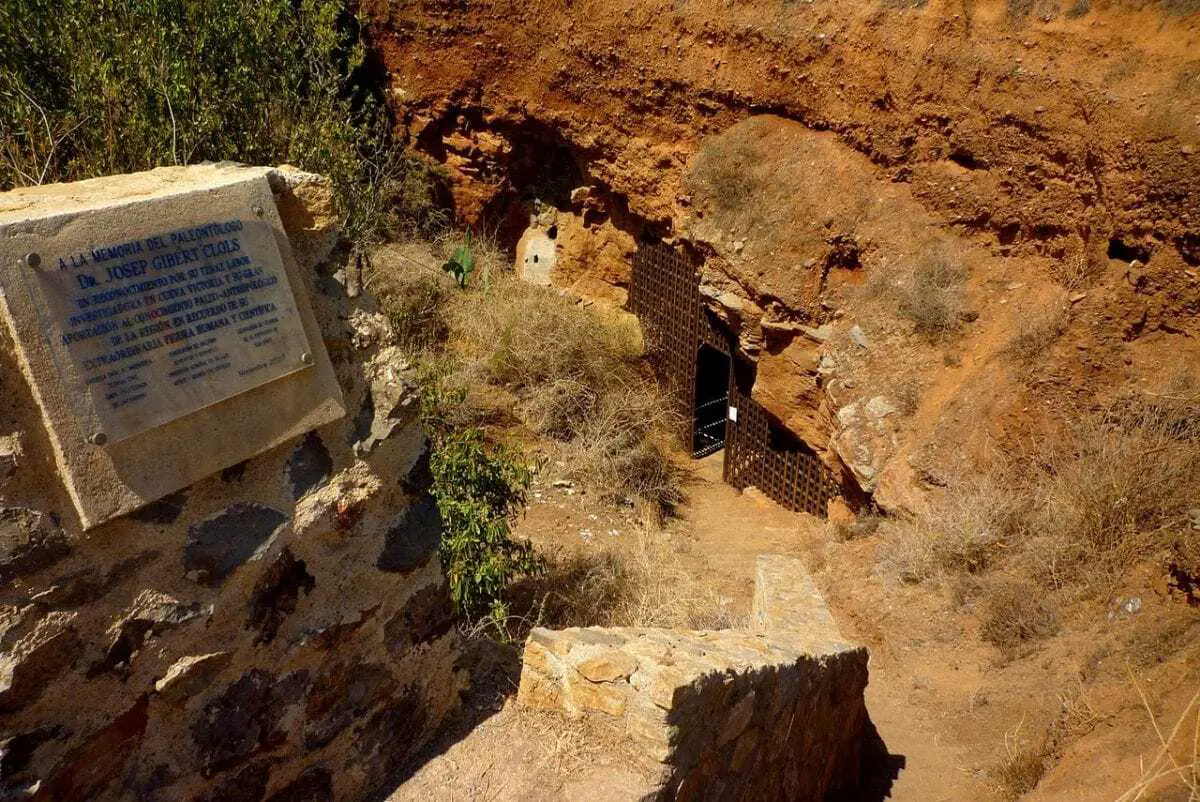A study published in Journal of Human Evolution reveals for the first time the diet of the fossil baboon Theropithecus oswaldi found in Cueva Victoria in Cartagena (Murcia, Spain), the only site in Europe with remains of this primate whose origins date back to four million years ago in eastern Africa.
The new study analyses for the first time the diet of the only fossil remains of this primate with the analysis of buccal dental microwear. According to the conclusions, the eating pattern of this guenon -the most abundant in the fossil records from the African Pleistocene- would be different than the one in the baboon Theropithecus gelada -the phylogenetically closest species living in Semien Mountains, northern Ethiopia, at the current moment-, which usually eats herbs and stalks.
The study, led by the lecturers Laura Martínez and Alejandro Pérez-Pérez, from the Faculty of Biology of the University of Barcelona (UB), counts on the participation of experts from the Faculty of Earth Sciences and the Faculty of Psychology of the UB as well as members from the Autonomous University of Barcelona, University of Alicante, the Museum of Orce Prehistory and Palaeontology (Granada) and the George Washington University (United States).
Cueva Victoria: the long journey of the African baboon Theropithecus oswaldi
The genre Theropithecus spread over the Sahara Desert, from east to north and south in the African continent. Its evolutionary lineage, also present in some European and Asian areas, reached its limit of disappearance about 500,000 years ago. Today, it would be only represented by the species Theropithecus gelada, a baboon which only eats plants and shows an ecological profile more similar to herbivore animals rather than primates.

In 1990, the excavation campaign led by the palaeontologist Josep Gibert found the first fossil remain -a tooth- of Theropithecus oswald( Journal of Human Evolution, 1995). This cave -an old manganese mine- provided with fossil remains of about a hundred species of vertebrates and it is one of the few European sites of the early Pleistocene with remains of human species. Outside the African continent, the fossil records of this baboon is scarce and researchers have only found other remains in Ubeidiya (Israel) and Minzapur (India).
The new fossil evidence of T. oswaldi -which date back to 900,000 and 850,000 million years ago- were recovered by a team led by the lecturers Carles Ferràndez-Cañadell and Lluís Gibert, from the Department of Mineralogy, Petrology and Applied Geology of the Faculty of Earth Sciences of the UB. The presence of this African guenon in the south-eastern area of the Iberian Peninsula strengthens the hypothesis of the animal dispersal models going from the African continent to Europe during the Pleistocene through the Strait of Gibraltar.
What was the fossil baboon diet like in the south of the Iberian Peninsula?
The analysis of the produced buccal-dental stretch marks due to food intake reveal the T. oswaldi specimens in Cueva Victoria “would have a more abrasive diet compared to the current T. gelada, and more similar to the diet of other primates such as mangabeys i(Cercocebus sp) and mandrylles (Mandrillys sphinx), which eat fruits and seeds in forested and semiopen ecosystems”, notes Laura Martínez, lecturer at the Department of Evolutionary Biology, Ecology and Environmental Sciences of the Faculty of Biology and first author of the study.
Other recent studies based on the observation of T. gelada in the area of Guassa, Ethiopia, describe a more diverse diet, with rhizome and tubers over the most unfavourable season. “The difference between T. oswaldi and T. gelada -continues the researcher- shows that the observed specialization in the current baboon could be a derived specialization which did not exist in the fossils of its lineage. This could respond to a regression in its ecological niche as an adaptation to anthropically altered ecosystems or as a result from climate change”.
The published study in Journal of Human Evolution which analyses dental and cranial adaptions of primates from the tribe papionine as the analogue model to the evolution of the hominini lineage -which shared a common geographical space in similar datings. The new study on dental microwear counted on the support from the Spanish Ministry for Research, Development and Innovation, the Catalan Government and La Caixa Foundation.
Header Image Credit –





